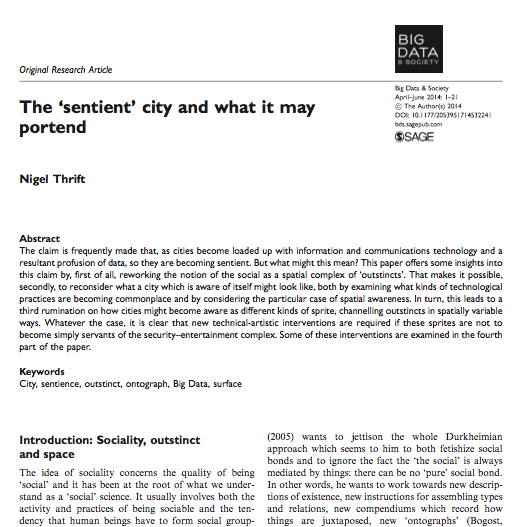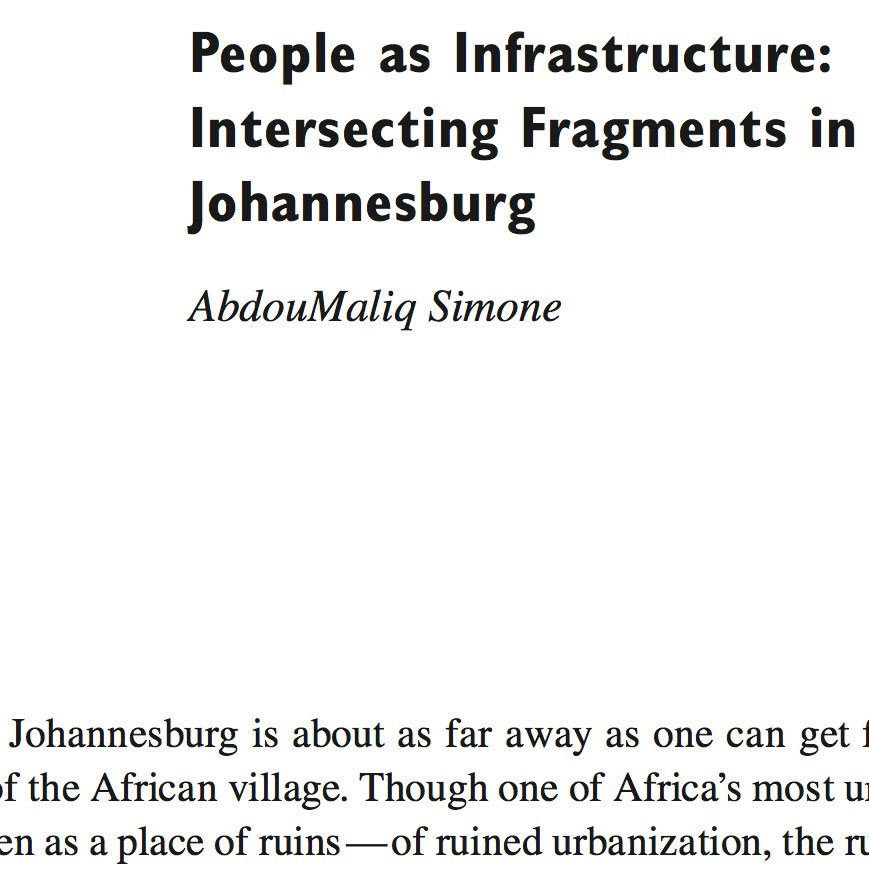Just had a short piece, After Interaction, published in Interactions magazine. (more…)
Tag: Cities
Reading The “sentient” city and what it may portend
A rambling piece in Big Data & Society by Nigel Thrift: The ‘sentient’ city and what it may portend.

Wasn’t expecting the digression into spirits and performance art, but I do like Thrift’s continual efforts to write about expansive human/agent capacities and extending the .
…the claim is being made that, as computational objects have developed, cities are able to take on new forms of vitality (Stern, 2010), forms of vitality which can develop over time. Perhaps one way in which we might consider this ques- tion is precisely through looking at how vitality devel- ops when computational things are explicitly included in the contours of experience. Then it becomes clear that it has only gradually arisen, line by line, algorithm by algorithm, program by program.
On Simone’s ‘people as infrastructure’

A few of us working at the intersection of data, civicmedia and citizenship are taking a look at this article by AbdouMaliq Simone. Some rambling comments follow:
First, just a short point about style: I’m delighted to see Simone’s unapologetic use of rich descriptions of Jo’berg’s streets. They are in striking contrast to what I see to be the standard ethnographic account in HCI papers. What I find tedious is the usual preamble in HCI works—explaining method—and then the use of participants’ quotes as a kind of ‘proof’ of particular points. Also, both point to a curious idea of what it means to demonstrate evidence or proof. Simone bothers with none of this. He gets straight to the stories, to the rich descriptions of inner city Jo’berg and its underbelly. (more…)